We may earn revenue from the products available on this page and participate in affiliate programs. Learn More ›
It’s not your imagination. In recent years, the pockets on backpacks have started to shrink: smaller storage in the hip belts, fewer pockets on the brain, less capacity on the undercarriage straps. This may be in response to the rise in popularity of lightweight backpacking, and, for some, it can help to cut back on overpacking. But for backpackers that value comfort, versatility, and accessibility above all else, it can make packing a challenge.
The Gregory Baltoro and Deva are notable exceptions to this trend. At just under 5 pounds, these are not lightweight packs. They are chock full with useful features, including sleeping bag compartment, three zip pockets at the brain, a water bottle holder at the side, and multiple access points to the main compartment.
Gregory Baltoro and Deva Specs and Features
- Capacity (Medium): 65 liters (Baltoro); 60 liters (Deva)
- Weight: 4.9 pounds (Baltoro); 4.5 pounds (Deva)
- Gregory Torso Fit: 16 to 21 inches
- Deva Torso Fit: 14 to 20 inches
- Fabric: 210D nylon (body) and 630D nylon (bottom)
- Frame: Aluminum
- Pockets: Three top lid pockets, one side stretch pocket, one water bottle holder, front mesh pocket, two front zip pockets, two hip belt zip pockets
- Adjustment Points: Attached hip belt, shoulder straps, load lifters, adjustable back panel, sternum strap
- Bladder Compatible: Yes
- Bear Can Compatible: Yes (tested with a Bear Vault 500 and Counter Assault Bear Keg)
- Comfortable up to 50 pounds (as reported by the testers)
While the testers have expressed surprise at the weight of other backpacking backpacks we’ve looked at in this series, they could tell at first glance that the Gregory Baltoro and Deva were going to be on the heavy side. This backpack not only has an unusually large number of pockets, it also has just about every single other feature we could dream up. If anything, we’re surprised it doesn’t weigh more than it does.

Jason tested the Gregory Baltoro while Diana and Rebecca tested the Gregory Deva. Laura Lancaster
The Gregory Baltoro and Deva fit a wider range of bodies than other traditional backpacking backpacks, and our testers who have long and short torsos, narrow and wide hips, had, overall, a better experience dialing in the fit to their frames. This was certainly aided by the generous padding at the hip belt and shoulder straps, as well as the swivel at the shoulder strap connection points. If you’re not sure where to start in your backpack search, giving one of these a test run will provide you a good base for what to expect, comfort-wise, from a backpacking backpack.
About this Backpack Test
With plenty of backpacking gear, it’s possible to quantify what the “best” products are in any category. The best backpacking water filters need to be able to perform reliably across a wide variety of water sources. The best tent stakes need to have great holding power at a low weight. The best bear cans need to be able to keep bears out of your food. But what makes for the best backpacking backpack is more subjective.
First you have to consider everything you are carrying: a 20-pound overnight load carries a lot differently than 40 pounds of gear for a weeklong trip. Then there is how you pack that gear into your pack—do you use a water bladder or Nalgenes? Are you carrying lots of layers that you’ll need easy access to, or are you hiking in a fair-weather climate? But the biggest X factor of all is you: the padding, hip belt length, torso width, and shoulder strap curve all vary between backpacks, and choosing a backpack that’s wrong for your frame can result in everything from back pain to bruising.
To help find the best backpacking backpack for each body type, we selected a panel of testers across a wide range of body types and experiences, who will test a series of backpacks throughout the year. Once all bags are tested we’ll pool the results into a best backpacking backpacks article.
Our Testers

“I’m 5 feet 2 inches, with a short torso. I wear a size 0 or 2, but routinely check the children’s department when shopping for outerwear.” Rebecca Ross

“I’m a larger-than-average woman—5 feet 10 inches and a dress size 14. I tend to go straight for men’s gear, as a rule.” Diana Helmuth

“I am 5 feet 6 inches with a dad bod and massive calves” Jason Boyle
Rebecca Ross is a backpacker, climber, mountaineer, and runner who is a staff writer for GearJunkie and has contributed to Climbing magazine, and Melanin Base Camp.
Diana Helmuth has hiked extensively throughout the western U.S., Europe, and Chile and is the author of How to Suffer Outside, which won a National Outdoor Book Award.
Jason Boyle has been backpacking, hiking, and trail running for 30 years and currently works as a guide for REI out of Shenandoah National Park.
Testing the Gregory Baltoro and Deva in the Field
The Gregory Baltoro and Deva won top marks for fit with our testers, who were impressed at how adjustable the pack was in every dimension. There was a marked difference, however, in their ability to store and access their gear. While Jason was using the men’s version of this pack (Baltoro) instead of the women’s version (Deva), used by the other two testers, his experience likely reflects his different packing style, which he varies less often than either Rebecca or Diana.
| Category | Rebecca | Jason | Diana | Average |
| Fit: Could you adjust it to your satisfaction? | 10 | 8 | 6 | 8 |
| Comfort: Did the pack cause you any pain or discomfort? | 8 | 6 | 5 | 6.3 |
| Load Bearing: How did it handle a heavy load? | 8 | 7 | 9 | 8 |
| Storage: Did the pack adequately hold all your gear? | 10 | 5 | 10 | 8.3 |
| Accessibility: How easy was it to access all your gear in the field? | 10 | 6 | 10 | 8.6 |
| Value: Is it worth the money? | 7 | 4 | 7 | 6 |
| Overall | 10 | 5 | 7.8 | 7.6 |
The testers also noted a few surprising pain points with the fit of the Gregory Baltoro and Deva that are worth looking at before making a final purchasing decision.
Fit, Comfort, and Load Bearing
The Gregory Baltoro and Deva have a standard assortment of adjustment points: shoulder straps, load lifters, hip belt, sternum straps, and back panel. The testers reported that all of these adjustments were easy to use and that they were able to fit the backpack to their frames correctly, suggesting that the Gregory Baltoro and Deva series has the potential to work well for a wide variety of body types.
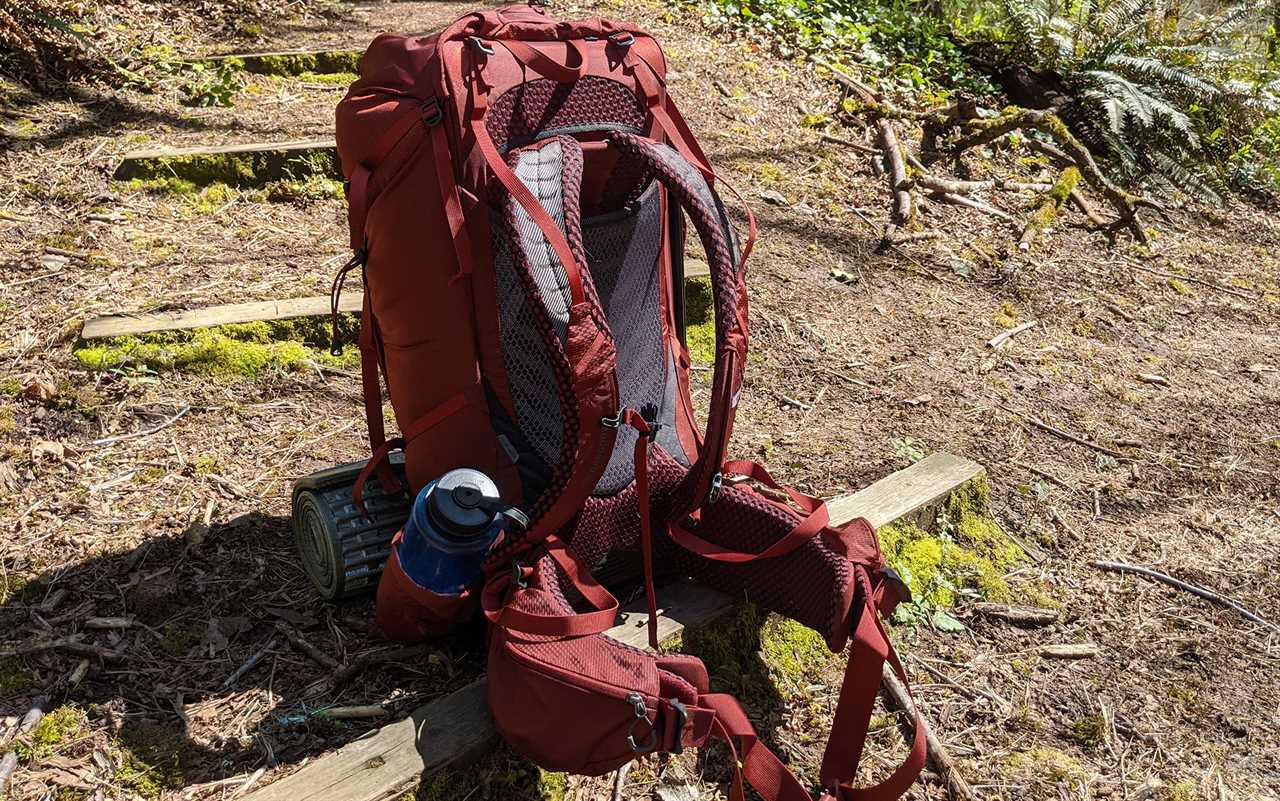
The straps on the Gregory Baltoro unloosen much further than other backpacking backpacks, allowing it to fit a greater range of body types. Laura Lancaster
They similarly found the Gregory Baltoro and Deva easy to balance, thanks in part to the versatility of its pockets and attachment points. While some of the testers struggled to pack their typical kit into more minimalist packs, such as the Big Agnes Parkview and Garnett, the Gregory Baltoro and Deva had almost all of the standard bevy of pockets they were used to (with one notable exception), allowing the testers to pack their kit as they normally would. For Jason, there might have been too many options, as he found “the buckles for the straps were always in the way. For example, the upper compression strap blocks the zipper into the main compartment.”
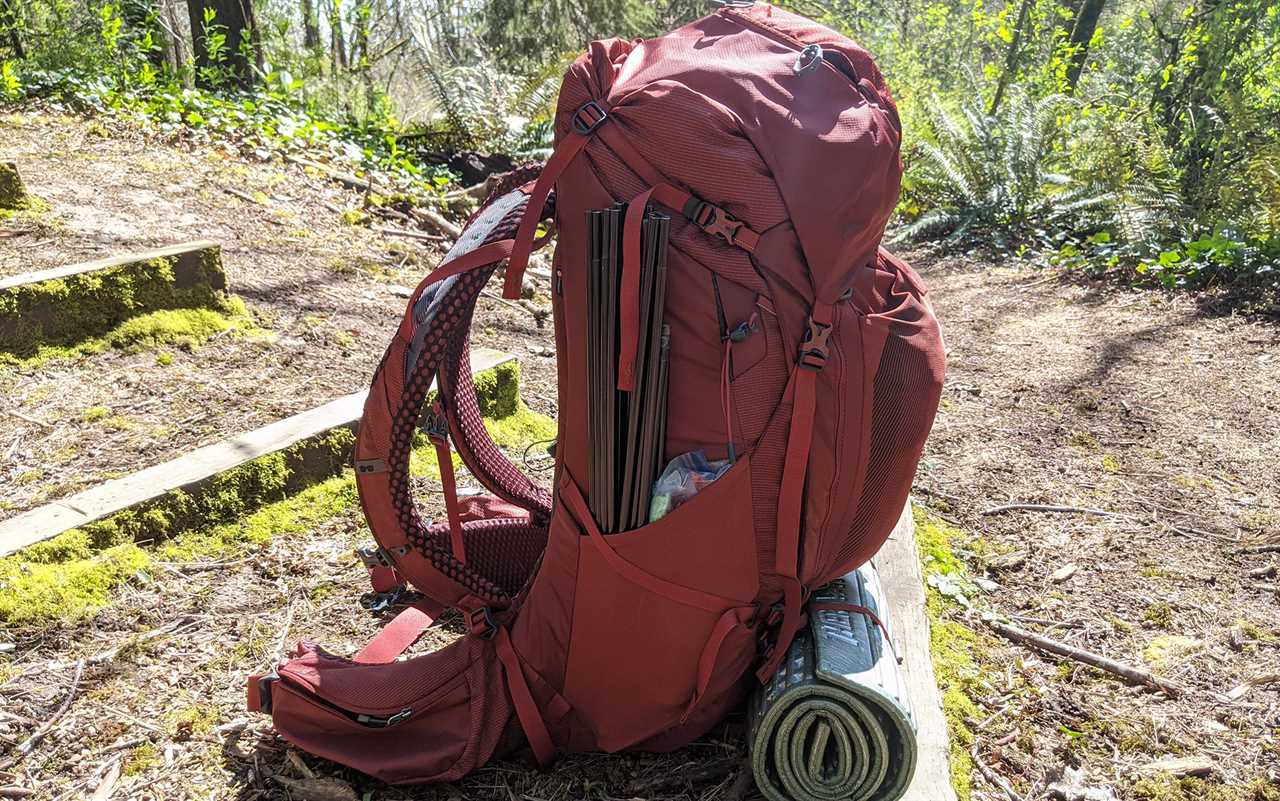
The top compression strap of the Gregory Baltoro is positioned too high to provide additional security for tent poles, and must be unclipped to access the front zipper entry to the main compartment. Laura Lancaster
Despite the ease with which the testers were able to adjust and balance their gear in the Gregory Baltoro and Deva, they all experienced different minor pains while using this pack that reflected their different body types, and not all of which were fixable. Rebecca ended up taking out a few items from her standard kit for a 14-mile overnight along the Lewis and Clark Discovery Trail due to discomfort on her shoulders, in addition to minor pain along her hips. For her, this pack worked best at a lower base weight. Jason, on the other hand, noted that the pre-curved hipbelt did not fit his body correctly. To keep the pack on his hips, he needed to cinch the hipbelt more than was comfortable.
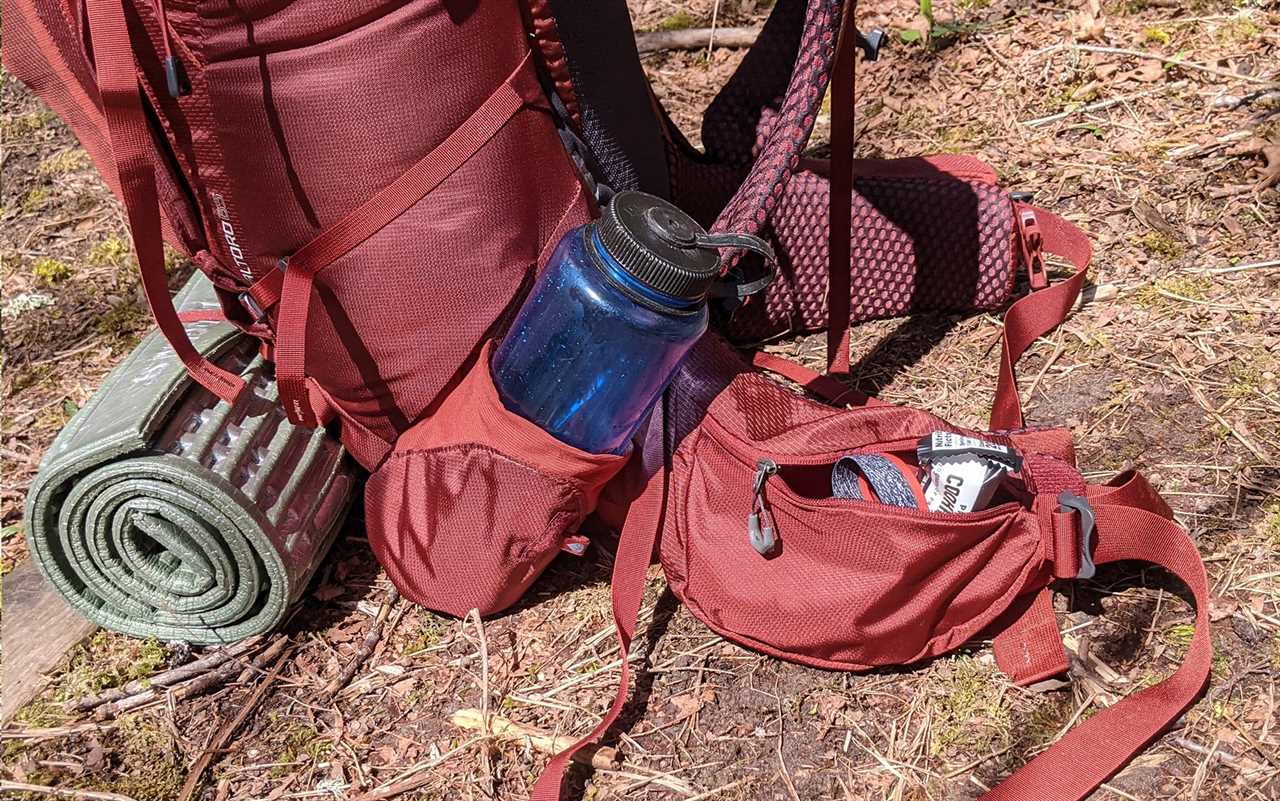
The pre-curved hip belt worked well for both Diana and Rebecca, but not for Jason. Diana also noted that it was nice to be able to “grab my water bottle, take a swig, and put it back in the pouch without taking my pack off.” Laura Lancaster
Diana also experienced discomfort (on her right shoulder and in her trapezoid), for a different reason: The panel on her backpack was slightly slanted. Once she realized what was going on, she was able to remedy the issue easily.
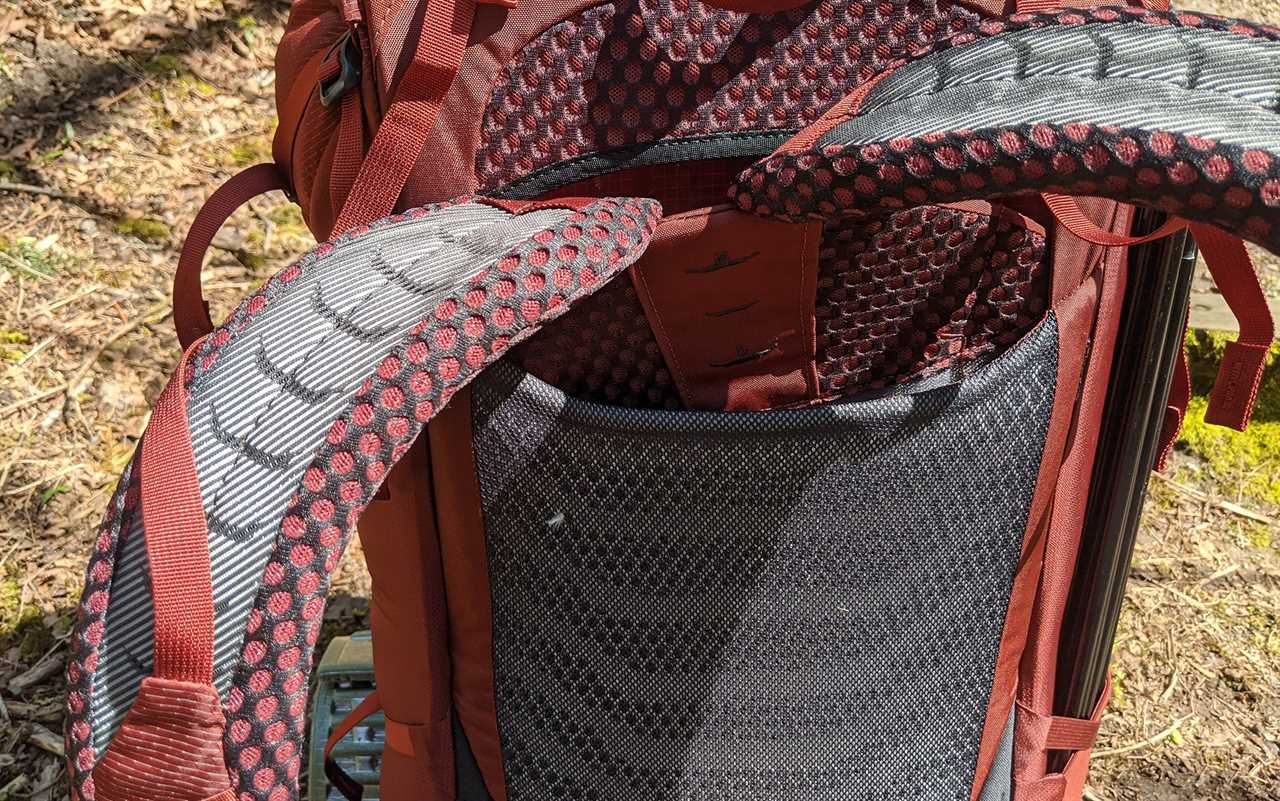
It was easier to skew the alignment of the Gregory Baltoro’s back panel than I would have liked. Laura Lancaster
Like the Kelty Coyote, the adjustable back panel for the Gregory Baltoro and Deva is held in place by heavy-duty velcro. The upside here is that you can really fine tune the back panel to the exact right fit, but it also means that it’s possible to inadvertently put the back panel back in at a skewed angle. However, unlike the Kelty Coyote, there was no give to the back panel when it was set to its highest setting, reducing unnecessary strain on your shoulders.
Storage and Accessibility
The Deva version of Gregory’s flagship won high accolades from testers for its storage and accessibility. Both Diana and Rebecca appreciated that there were three separate zip compartments in the brain, with Rebecca noting that “it allowed for easy access to practically everything I needed.” They also appreciated the roominess of the hip belt pockets, which were large enough to fit maps, phones, and snacks.
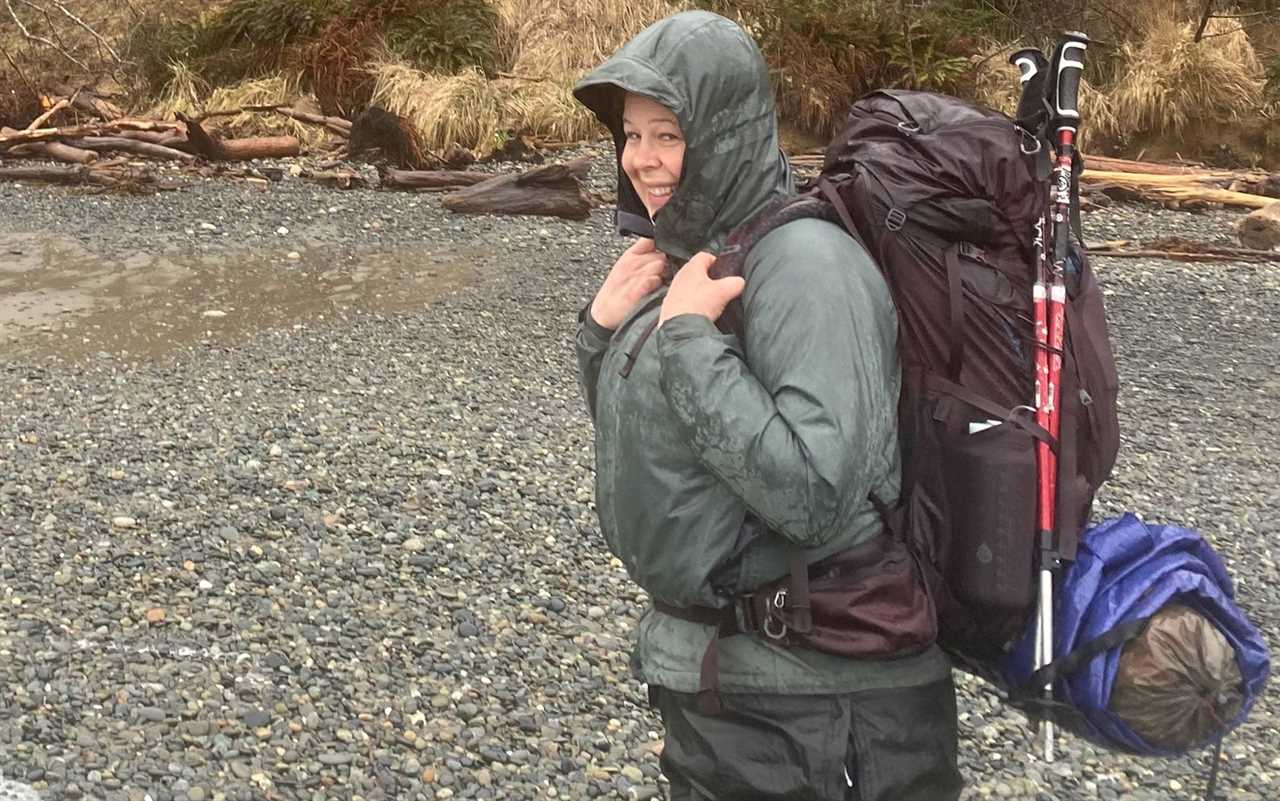
Diana reported that the hip belt pockets were easy to access on her winter overnight along the Olympic coast. Diana Helmuth
While Jason shared their appreciation of the water bottle pouch on the side of the backpack (“Normally I feel like a contortionist trying to get a water bottle out of a side pocket without taking the pack off”), he noted that the lack of a second mesh pocket on the side meant he had to rethink his typical packing routine. Typically he keeps his tent poles and camp chair on one side (a standard practice, to maximize compression in the interior of your pack) and his bathroom kit on the other, which was not possible with this setup.
Both Rebecca and Jason noted that the sleeping bag compartment was on the small side for their 0-degree bags, with Jason ultimately choosing to use the compartment for his stove and cookware instead. Worse, the buckle to the sleeping bag compartment broke off the first time he tried to open it.
Diana was particularly impressed by the undercarriage straps, which can be used to hold any gear you’d rather keep on the outside of your pack. “I strapped my tent on the outside at the bottom of the pack with a 10-foot by 12-foot tarp around it,” she said. “I didn’t think it would fit, but those gear straps really can take a lot.”

The large undercarriage straps were useful for carrying gear that was expected to get unusually mucky. Diana Helmuth
Several testers also noted that the design of the back shove-it pocket wasn’t optimal. The mesh stretched less than it did with other best-in-class backpacking backpacks, like the Deuter Aircontact. Furthermore, stuffing it to capacity reduced the space in the two back zip pockets to the point that it became unusable.
Final Thoughts on the Gregory Baltoro Deva
Rebecca’s take: “The Gregory Deva allowed for easy access to practically everything I needed.”
Diana’s take: “I loved many of the details of the Gregory Deva but the adjustable velcro back panel was difficult to even out, resulting in shoulder pain.”
Jason’s take: ““The Gregory Baltoro was my favorite pack about 10 years ago and I was hoping the new version would be great, but it was hard to pack and I was not impressed by its ergonomics.”
All the testers gave high marks to the sheer number of pockets and straps that the Gregory Baltoro/Deva included, easily the most of any backpack we’ve looked at so far in this series. This gave them plenty of flexibility in bringing some of the larger items in their kit (helpful, given that they were primarily testing this backpack during the shoulder season). However, Jason, who has a very dialed-in kit thanks to his work as a backpacking guide, found that the lack of a second side mesh pocket interfered with his typical packing routine, where he would put his tent poles on one side and his bathroom kit on the other.
While most of the fit features of the Gregory Baltoro/Deva were fairly standard, there were two pain points that our testers identified. The first was with the velcro back panel adjustment—incorrectly aligning the back panel can result in some discomfort in the shoulder area. The other was with the curved hip belt, which Jason found uncomfortable. Whether or not this feature works for you will depend on the shape of your frame, so pay attention to how this feature fits when trying out this pack for the first time.
The post Gregory Baltoro and Deva Review: A Great Choice for First-Time Backpackers appeared first on Outdoor Life.
Articles may contain affiliate links which enable us to share in the revenue of any purchases made.
By: Laura Lancaster
Title: Gregory Baltoro and Deva Review: A Great Choice for First-Time Backpackers
Sourced From: www.outdoorlife.com/gear/gregory-baltoro-deva-review/
Published Date: Thu, 13 Apr 2023 21:41:21 +0000
----------------------------------------------
 Backyard GrillingWeekend WarriorsAdvice from DadBeard GroomingTV Shows for Guys4x4 Off-Road CarsMens FashionSports NewsAncient Archeology World NewsPrivacy PolicyTerms And Conditions
Backyard GrillingWeekend WarriorsAdvice from DadBeard GroomingTV Shows for Guys4x4 Off-Road CarsMens FashionSports NewsAncient Archeology World NewsPrivacy PolicyTerms And Conditions
